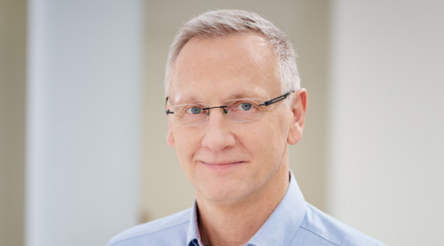Member viewpoint: Chris Gilbey on the magic that is graphene

Viewpoint by Australian Manufacturing Forum member, Chris Gilbey
We have several problems in this country. And manufacturing isn’t one of them.
One part of the problem is that people generally assume that manufacturing doesn’t exist in Australia. Since you are reading @AuManufacturing and likely a member of the manufacturing Forum, I think it is fair to say that you care about manufacturing, even if you aren’t directly involved.
Of course technology wouldn’t exist without engineering, science, design, manufacturing, and of course supply chains.
There is a conference on in Melbourne on Tuesday (19th Nov) that I wanted to highlight about graphene and smart cities. Several of the people presenting are already influencing the way that governments and major corporations are developing innovation strategies, and policy.
The fact is that while politicians (of all persuasions) in Australia continues to bicker about whether Climate Change is real or a hoax, big industrial players have changed course and are figuring how to adapt to a world in which CO2 is an intrinsic part of decision making in the C-suite.
One of the speakers will be Victoire de Margerie. I met Victoire two years ago. She is the Vice President of the World Materials Forum, a body like Davos, but for materials.
I was fortunate enough to be invited to present my company at the WMF event in Nancy, France at their annual event.
Victoire is an absolute powerhouse in Europe, and beyond. She has had an amazing career – she has built manufacturing plants, is on the boards of engineering companies, and a lot more.
The thing that Victoire is pushing is that to solve the climate change challenge, we have to reduce CO2 emissions AND improve resource efficiency. Or in other words decouple economic growth from the use of our natural resources while creating value for our industries throughout global supply chains.
That is where, in my mind, graphene has a major role to play.
Other people presenting at the conference who are extraordinarily important to hear from include Huw Bradlow, the ex CTO of Telstra, and an absolutely brilliant thinker and doer. And Peter Froeschle, who is the CEO of ARENA2036, the most significant automotive research facility in the world. Prior to his current gig, Peter was the overall head of R&D at Daimler. He thinks big and executes on his vision. An amazing man.
That’s for starters.
But what is bringing together these people in Melbourne on Tuesday, is that they all understand that, in Australia, we have an amazing untapped and largely unrecognized resource that, in my view, can help make a superpower in manufacturing: our extraordinary materials scientists.
Every time the Olympics are on, or the Commonwealth Games, I hear the sportscasters talking about how this swimmer or cyclist or whatever, is punching above his weight to get gold or silver or bronze.
Our graphene scientists punch above their weight seven days a week, year in and year out. And what they are doing is identifying new applications that utilise graphene, new ways to manufacture it and new capabilities.
The roll call of greats in the field is pretty long, and there is, interestingly, an uneven distribution of graphene scientists in Australia. (Based on an analysis of ARC grants from the Federal Government, I found that 49.5 per cent of graphene related grants have gone to Victorian based scientists).
Unlike Climate Change in the world of manufacturing and supply chains and strategic planning, we have passed a tipping point that no one should disagree with, and Elon Musk got us there: electrification.
That, together with the sharing economy is creating the most extraordinary disruption imaginable in the automotive sector. Something quite similar is about to hit the construction sector with the notion of smart cities.
What has graphene got to do with either of these things? Well, graphene in batteries, in supercapacitors, in sensing materials inside vehicles, in concrete, on wood…the list goes on.
And what do these things have to do with climate change? Well, if concrete is the largest contributor to CO2 on the planet, it stands to reason that if you can make the concrete stronger with graphene, you will use less concrete and that is going to immediately reduce the carbon dioxide footprint.
Australia really can be at the absolute forefront of graphene innovation. And I mean innovation in the meaning that Peter Drucker attributed to the word: invention plus profit.
Graphene is going to disrupt manufacturing. New business models will be required. New supply chains will come into existence. The countries who understand this will be winners because whichever government understands how to incentivise business to establish the graphene-related supply chains within their domains will see the economic gains.
Hopefully you will consider coming to the Graphene + Conference in Hawthorne on Tuesday. There are still tickets left. If you go to the AGIA website, you can book a ticket. And if you use my name, ChrisGilbey, no, space in between, you will get a discount!
Hope to see you there…if you are part of the Forum, please say Hi!
Chris Gilbey is executive chairman of Imagine Intelligent Materials, an Australian developer of graphene-based coatings for industrial textiles and fibres.
Picture: grapheneindustry.org.au
Subscribe to our free @AuManufacturing newsletter here.
Topics Manufacturing News
@aumanufacturing Sections
Analysis and Commentary Awards Defence Manufacturing News Podcast Technology Videos










